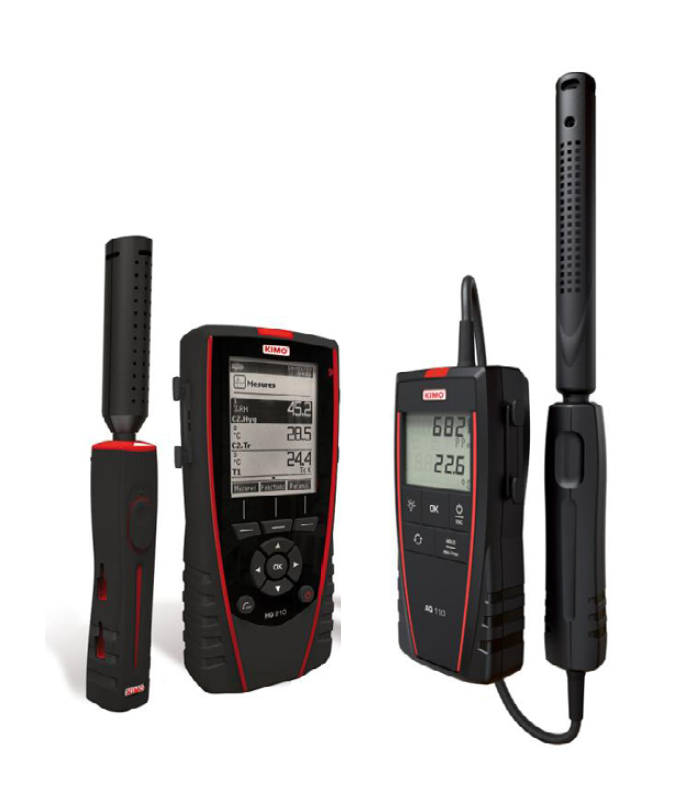Why Energy auditors need to measure CO2 (IAQ)
An increasingly dangerous trend in home and building Energy Audits focus solely on the “Energy Efficiency” of the building while ignoring the potential risks of sealing “IN” CO2 emissions and moisture in the home causing serious health and comfort concerns. By sealing your home to be “Air Tight” for the purpose of decreasing gas and electric bills, you could also be making our buildings too tight. In many cases, the benefits associated with a drop of energy usage carry a heavy price in the form of moisture damage and health risks produced by higher levels of CO2.

Until very recently, houses were designed and built with the concept of “A house should be allowed to breathe”. This self-ventilation strategy would provide for constant replenishment of the air supply to the occupants by balancing the quality of indoor “used” air (higher levels of CO2 and moisture), with “fresh” outside air (higher levels of oxygen).

Starting around the early 2000s, there has been a strong emphasis toward energy savings and the importance of reducing the individual’s carbon footprint. In addition, newer technologies including strong foam insulation, high efficiency windows, and airtight doors, among many others, have brought a push for tight buildings by sealing homes and buildings from outside air. While these initiatives may be monetarily efficient, there is now a growing concern about the actual indoor air quality of the buildings and their effects on the health of their occupants, especially the young and elderly.
By making buildings too tight, we are locking in all of the pollutants generated inside the house (CO2, CO, smoke, odors, germs, VOCs, etc.). Those chemicals, if not dealt carefully with an intelligent ventilation system, could make the premises very uncomfortable for the residents. Furthermore, people and pets could become drowsy, get sick more frequently, and have potentially fatal consequences in extreme cases.

The American Society of Heating, Refrigeration, and Air Conditioning Engineers (ASHRAE) created a standard (62.2) whereby they recommend a certain amount of air changes in the home depending on the size of the home and how many people live there.
To go further: Using CO2 concentration to measure air change rate.
CO2 Sources and Levels
Measuring CO2 is a simple, fast and effective way of determing the Indoor Air Quality and the effectiveness of the building’s ventilation system.
A well-designed ventilation system is extremely important for diluting high CO2 levels and circulate clean fresh air back into the home or building. High CO2 readings are a MAJOR indication of poor ventilation, which could also signal a build-up of other air contaminants. Indoor CO2 levels are directly affected and elevated by a number of sources including but not limited to the following:
- Number of people and animals in a building
- Gas & fuel burning appliances (Heating system, water heat, dryers, etc.)
- Wood replaces and stoves
- Cigarettes
- Outside sources (Nearby highways, parking garages, industrial sources, etc.)
The levels of CO2 in the air and associated health problems are:
| 350 - 400 ppm | Background (normal) outdoor air level |
| 400 - 1,000 ppm | Typical level found in occupied spaces with optimal air exchange |
| 1,000 - 2,000 ppm | Level associated with complaints of drowsiness and poor air |
| 2,000 - 5,000 ppm |
Level associated with headaches, sleepiness, and stagnant, stale, stuffy air. Poor concentration, loss of attention, increased heart rate, and slight nausea may be present. |
| > 5,000 ppm | This indicates unusual air conditions where high levels of other gases could also be present. Toxicity or oxygen deprivation could occur. This is the permissible exposure limit for daily workplace exposures. |

CO2 Monitoring Solution: AQ110, HQ210, AMI310 and KCC320, Indoor Air Quality Monitors
The measurement of indoor CO2 levels can be easily monitored with the Sauermann AQ110 handheld device. Simple to use, the measured values are displayed live with the option of freezing the measurement and displaying the Min and Max values.
The multifunction HQ210 and AMI310 portable devices also allow CO2 measurement, thanks to the SCOH112 probe and their audible alarm. They offer the recording of datasets to measure the properties of air quality in the ambient air and ventilation ducts in all types of ERP buildings.

The Kistock KCC320 autonomous data logger records data over time. It has programmable alarm thresholds, a large memory capacity and free software for the analysis of the measured data.
Thanks to those Indoor Air Quality Monitors, the Home Energy Auditor can easily move from room to room to determine the CO2 level in each area of the building immediately and store the information accordingly. When required, the auditor may test and record the air quality for longer periods of time to determine the effects of some of the IAQ causes listed above. This will help the IAQ professional determine the base line for true Indoor Air Quality analysis and recommend the proper air ventilation and circulation requirements for the buildings.
